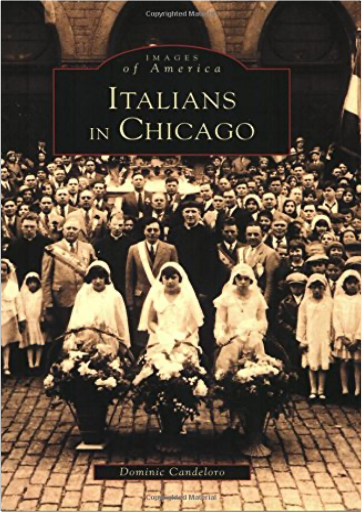 The stories of Chicagoís Italian communities are an important part of the rich and diverse mosaic of Chicago history. As a rail center, an industrial center, and Americaís fastest growing major city, Chicago offered opportunities for immigrants from all nations. Italians in Chicago presents an intriguing narrative record of the earliest beginnings of Italian communities in the city, going back to the 1850s. It explores the lives of ten significant members of the Chicago Italian-American community. ÝÝThis book is a collaborative, cumulative effort, and gives glimpses and echoes of what occurred in the Italian-American past in Chicago. Including vintage images and tales of such individuals as Father Armando Pierini, Anthony Scariano, and Joe Bruno, and groups such as the Aragona Club and the Maria Santissima Lauretana Society, this collection uncovers the challenges and triumphs of these Italian immigrants. Ý 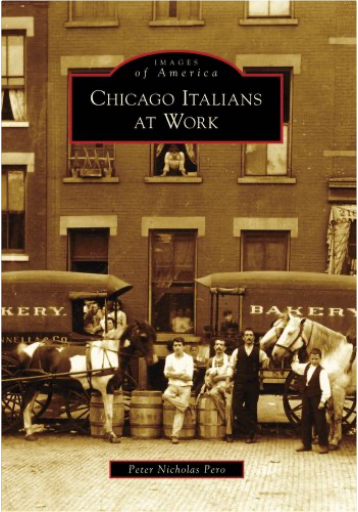 For more than a century, Italian immigrants and their descendants contributed their labor and talent to building the city. Chicago Italians at Work focuses on a period from 1890 to 1970 when industry was king in this midwestern metropolis. Generations of Italians found work in companies such as U.S. Steel, Western Electric, Pullman, Crane, McCormick/Harvester, Hart Schaffner and Marx, and other large industrial corporations. Other Italians were self-employed as barbers, shoe workers, tailors, musicians, construction workers, and more. In many of these trades, Italians were predominant. A complex network of family enterprises also operated in the Chicago Italian community. Small shopkeepers generated work in food services and retail employment; some of these ma-and-pa operations grew into large, prosperous enterprises that survive today. Finally, Italians helped develop trade unions, which created long-term economic gains for all ethnic groups in Chicago. This book chronicles the labor and contributions of an urban ethnic community through historic photographs and text. 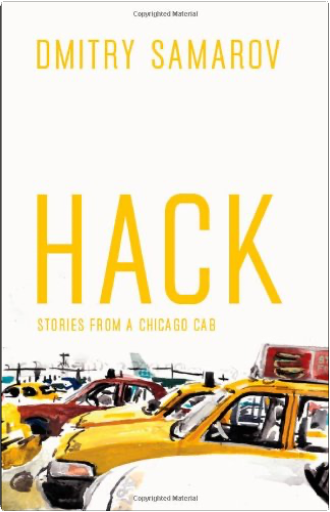 Cabdrivers and their yellow taxis are as much a part of the cityscape as the high-rise buildings and the subway. We hail them without thought after a wearying day at the office or an exuberant night on the town. And, undoubtedly, taxi drivers have stories to tell—of farcical local politics, of colorful passengers, of changing neighborhoods and clandestine shortcuts. No one knows a city’s streets—and thus its heart—better than its cabdrivers. And from behind the wheel of his taxi, Dmitry Samarov has seen more of Chicago than most Chicagoans will hope to experience in a lifetime. 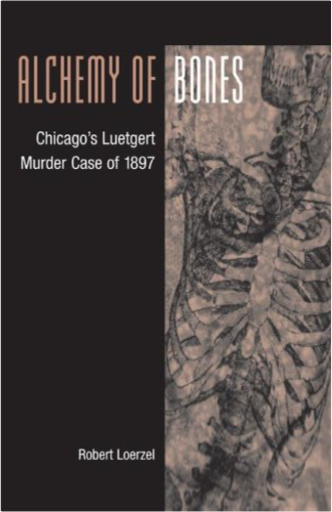 On May 1, 1897, Louise Luetgert disappeared. Although no body was found, Chicago police arrested her husband, Adolph, the owner of a large sausage factory, and charged him with her murder. The eyes of the world were still on Chicago following the success of the World's Columbian Exposition, and the Luetgert case, with its missing victim, once-prosperous suspect, and all manner of gruesome theories regarding the disposal of the corpse, turned into one of the first media-fueled celebrity trials in American history. 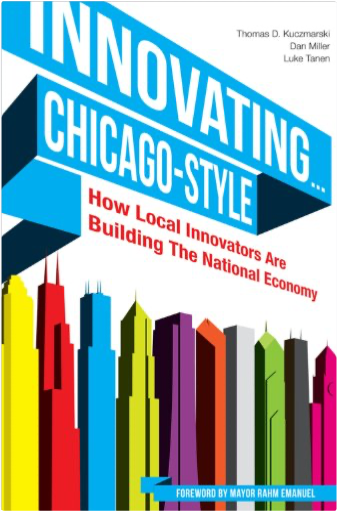 More timely than ever, this volume features interviews with 80 of the most successful innovators of the past decade from the Chicago region, showing how the key to unlocking economic growth and recovery is through innovation. Each example highlights the consumer need being met, pinpoints the uniqueness of the innovation, covers the fascinating background story, reveals the extent of the impact on society, and takes a glimpse into what is in store for the future. Many of the innovators featured in this book are winners of the Chicago Innovation Awards, a yearly celebration of the most innovative products and services in the Chicago region. 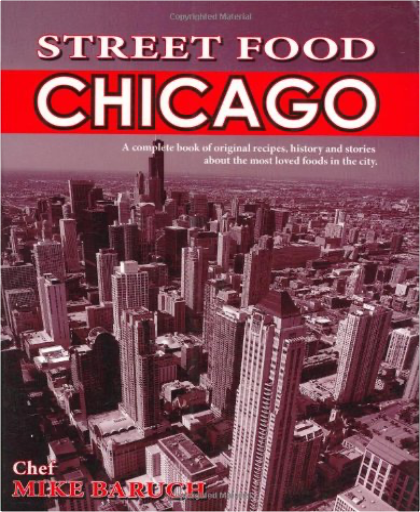 This book focuses on two types of Chicago foods (page 7)—"everyday working man's 'street food'"; "ethnically oriented joints." The author sees such places as "the heart and soul of the city" (page 7). He concludes his brief introduction by saying that (page 8): "The chapters and recipes in this book are my interpretations of what Chicago eats and has loved through the generations." The volume considers many different types of cuisine—Greek to Polish to soul to Italian to Chinese to Caribbean to Middle Eastern to Thai to. . . . In short, a lot of different types of food! Want to know how to make the Irish classic, Corned Beef and Cabbage? Go to page 76 and take a look. I have made this dish before, but the recipe here is an upgrade over how I have prepared this simple and hearty dish. A particular favorite among the recipes—the Billy Goat Tavern's cheeseburger (made famous on "Saturday Night Live" decades ago, featuring John Belushi; indeed, as I recall, the Rolling Stones appeared in one such sketch when they were musical guests) (see page 161). Pretty simple recipe, but it's the real deal. On the next page is another great hamburger recipe, from Nicky's on the South Side. Cooking the burger in a sweet onion oil appears to be the key. On pages 170 and following, the author provides two accompaniments to barbecue ribs—one a rub and the other a barbecue sauce. Both would add a nice touch to ribs. Do you like Greek Town in Chicago? There are some nice recipes here, from classic Gyros to the great Greek feta salad. I wish there were a recipe for the flaming cheese that is so prominent at Greek restaurants. And so on. This is not a book of fancy recipes—but of everyday food. As such, it offers a nice view of what everyday food is like in Chicago. — by Steven Peterson on Goodreads 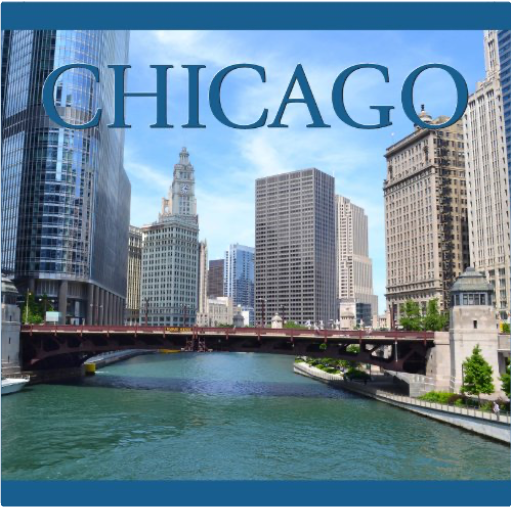 At 2.7 million residents, Chicago is the most populous city in the American Midwest. The dense skyline is home to some of the tallest buildings in the world. Yet despite the imposing towers, the city remains open and welcoming with its broad avenues, parks, and promenades. This city has inspired schools of architecture, regional cuisine, and styles of literature. Works by Chagall, Miro, and Picasso are among Chicago's famous pieces of outdoor public art. Its citizens are devoted to its universally respected theaters and nationally beloved sports teams. The pages of this book are a photographic tribute to the streets of the Windy City. | 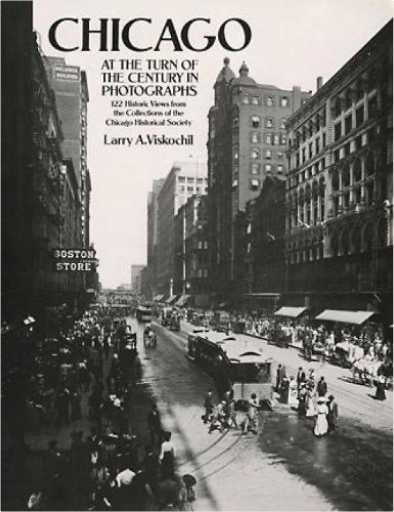 Remarkable collection of 122 vintage views, most dating from 1904 to 1913. Rare large-format prints offer detailed views of the city's architecture and street life, including City Hall, State Street, the Loop, Hull House, Union Station, Comiskey Park, Lincoln Park Zoo, and many other landmarks. Introduction. Captions. Maps. 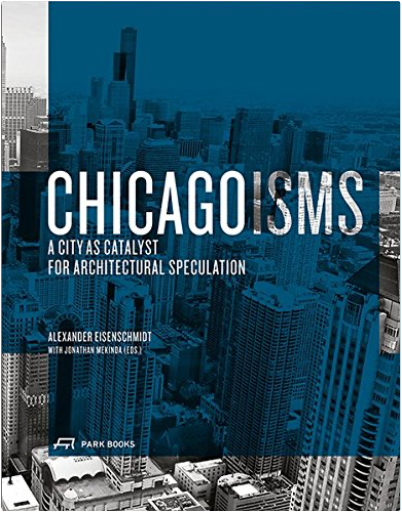 Chicago has long captured the global imagination as a place of tall, shining buildings rising from the fog, the playground for many of architecture's greats—from Mies van der Rohe to Frank Lloyd Wright—and a surprising epicenter for modern construction and building techniques. In this beautifully illustrated volume, Alexander Eisenschmidt and Jonathan Mekinda have brought together a diverse pool of curators, artists, architects, historians, critics, and theorists to produce a multifarious portrait of the "Second City." 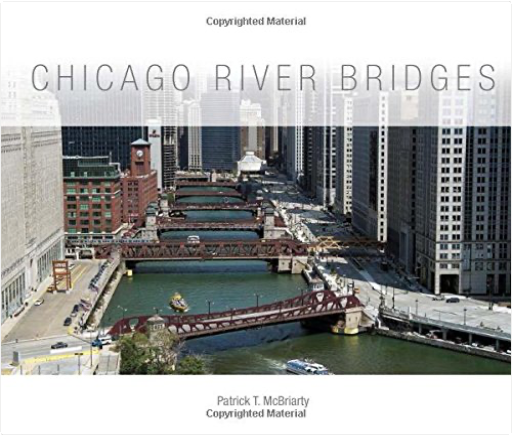 Chicago River Bridges presents the untold history and development of Chicago's iconic bridges, from the first wood footbridge built by a tavern owner in 1832 to the fantastic marvels of steel, concrete, and machinery of today. It is the story of Chicago as seen through its bridges, for it has been the bridges that proved critical in connecting and reconnecting the people, industry, and neighborhoods of a city that is constantly remaking itself. In this book, author Patrick T. McBriarty shows how generations of Chicagoans built (and rebuilt) the thriving city trisected by the Chicago River and linked by its many crossings. This comprehensive guidebook chronicles more than 175 bridges spanning 55 locations along the Main Channel, South Branch, and North Branch of the Chicago River. With new full-color photography of existing bridges and more than one hundred black and white images of bridges past, the book unearths the rich history of Chicago's downtown bridges from the Michigan Avenue Bridge to the often forgotten bridges that once connected thoroughfares such as Rush, Erie, Taylor, and Polk Streets. Throughout, McBriarty delivers new research into the bridges' architectural designs, engineering innovations, and their impact on Chicagoans' daily lives, explaining how the dominance of the "Chicago-style" bascule drawbridge influenced the style and mechanics of bridges worldwide. Interspersed throughout are the human dramas that played out on and around the bridges, such as the floods of 1849 and 1992, the cattle crossing collapse of the Rush Street Bridge, or Vincent "The Schemer" Drucci's Michigan Avenue Bridge jump. A confluence of Chicago history, urban design, and engineering lore, Chicago River Bridges illustrates Chicago's significant contribution to drawbridge innovation and the city's emergence as the drawbridge capital of the world. 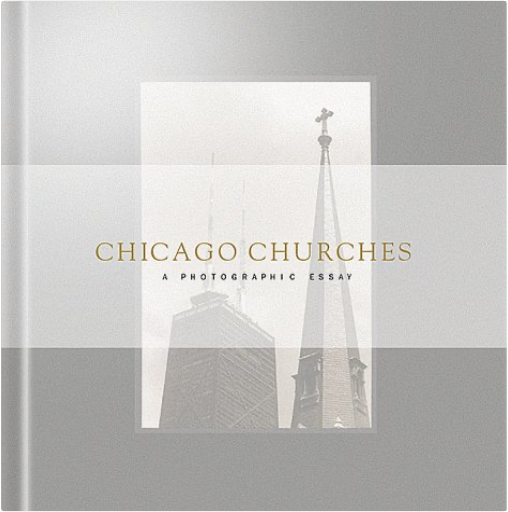 An insightful look at the church, not just as architecture but as a reflection of the cultural diversity within a city and, more importantly, the universality of faith. Captured through the city's change of seasons, these photographs of 100 Chicago-area houses of worship display an intriguing cross section of religious and cultural groups and the communities they represent. 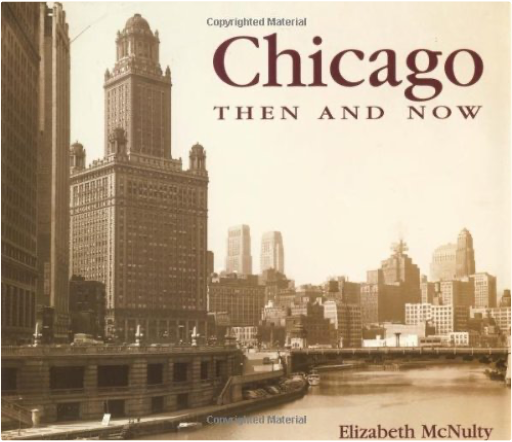 The latest installment in the popular Then and Now series showcases the capital of the Heartland and one of the premier cities in the nation and the world: Chicago. Chicago's change and growth over the last century is captured in this photographic history. Modern color photos sit side by side with black and white archival photographs. Every important building, avenue, neighborhood, and point of interest is documented. It covers all of Chicago's landmarks from Navy Pier to the Stockyards and from the Southside all the way up the Magnificent Mile. Take in a game at Wrigley Field, then take it all in from the top of the Sear's Tower. The Water Tower and all the other architectural features that make Chicago great are also included. 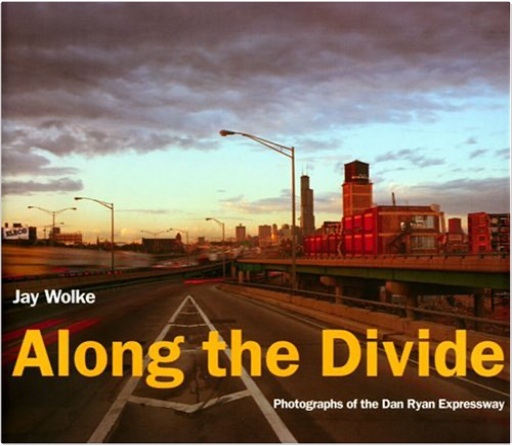 Cutting across Chicago’s South Side in a broad swath of concrete, steel, and overpasses, the Dan Ryan Expressway is one of America’s busiest, and perhaps most chaotic highways. Yet underneath the cacophony of its ten lanes lies an intriguing world of urban ecology and human networks. In The Dan Ryan Expressway, artist and photographer Jay Wolke unearths an ecosystem unto itself that weaves human and industrial elements into an essential feature of Chicago’s identity. |

library 101720
Collection Total:
1,127 Items
1,127 Items
Last Updated:
Oct 17, 2020
Oct 17, 2020


 Made with Delicious Library
Made with Delicious Library